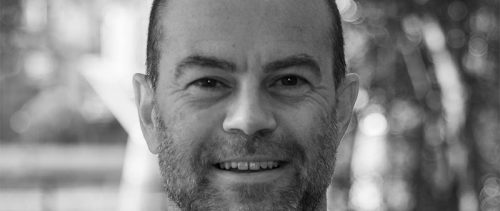- The Expert View
WHAT IS THE MOST CHALLENGING ASPECT OF A DIVERSE WORKING ENVIRONMENT?
Diverse perspectives, experiences and skillsets are invaluable to the growth and success of any organisation, but creating this environment can be difficult to put into practice.More Questions
We asked the industry experts...
What is the most challenging aspect of a diverse working environment?

Stephen Frost
Founder and CEO of Included
One of the most common, and most critical, challenges we have found is helping organisations truly understand the distinction between diversity and inclusion. Without an inclusive environment, it is not possible to leverage diversity successfully. As well as other critical concepts, such as equality, equity and belonging, we need to ensure both are applied successfully for a visible impact.Know more about Stephen Frost →
Measuring the impact of change effectively is another common challenge seen in several organisations. Many organisations can successfully measure diversity, but very few are adequately measuring inclusion.

Suki Sandhu OBE
Founder, CEO, Board Member, Philanthropist
Diverse teams will ensure your business is engaged and involved in the wider mission and overarching objectives that have been set out. The core challenge for business leaders is to ensure that each voice is heard, amplified, and respected equally. Without this, organisations simply won’t benefit from the forward-thinking, progressive mindset that helps to drive innovation and success across an array of business landscapes.Know more about Suki Sandhu OBE →
To make this a priority, leadership development, implementing core training, and engaging with employees is critical. By helping nurture and grow talented individuals from a diverse range of backgrounds and cultures, leadership teams can help build a business that has solid foundations for the future.

Flooris Van Der Walt
Author, Executive, Mindset Transformational Coach
I have seen that a leader recruited a very diverse team, to be seen as someone who embraces diversity and inclusion, though never managed to consolidate the different views. The team becomes small islands, each stuck with their view, and therefore they became highly frustrated and the whole team fell apart.Know more about Flooris Van der Walt →
The challenge is to consolidate and integrate the different perspectives in an agreeable statement, decision, or action. Here again, the ego of the leader plays a crucial role. Leaders with egos do have the challenge to manage diversity and inclusion.

Tahmid Chowdhury
Policy Programme Manager and Diversity & Inclusion Coach
Increasing diversity is not all sunshine and rainbows – without proper organisational planning, diversity can actually lead to a worse working environment. It is why we talk about inclusion as being a key part of this – many of us have seen the efforts of bringing under-represented groups in through internship schemes or special graduate programmes.Know more about Tahmid Chowdhury →
These are often unsuccessful because staff with different backgrounds and ideas are expected to conform to the majority view, effectively eliminating any benefits of having them in the first place. Worse still, they are likely to feel excluded, leading to a divided workplace. So, for a truly diverse working environment to work, an inclusive workplace needs to be fostered to ensure that people feel welcome and fully able to contribute.

Ragil Ratnam
Educator, Leadership Advisor, Keynote Speaker
One of the most challenging aspects of diverse working environments is the ability not only to acknowledge but understand and potentially integrate, perspectives and thinking that can be so significantly different from our own. These can contradict our long-held beliefs and ideas. Human nature, in order to avoid cognitive dissonance, tends to discount perspectives that contradict what we already believe to be true, and it takes conscious effort to move beyond this.Know more about Ragil Ratnam →
An important trait that leaders require, as they move towards more diverse environments, is the ability to deal with ambiguity. As change happens, there may be no clear black and white answers, and we often need to hold quite different, and sometimes opposing, ideas in our minds. This can be very challenging when we are used to the world and the decision-making process being more clear-cut.
Change is difficult at the best of times. But when organisations have been working well, are efficient and profitable, and there are no obvious problems within the organisation, the case for change can be even more difficult to make. Promoting in such businesses and workplaces can be very challenging.

Fiona Daniel
Founder, CEO, Non-Exec Director
The most challenging aspect of a diverse working environment is accepting and embracing differences.Know more about Fiona Daniel →
The modern working environment still in many cases has dominant cultures where the outcome is a lot different in junior levels and homogeneity in senior levels. Working in these environments can be very challenging for groups/individuals who look up and don’t see themselves.
It can be difficult just simply trying to fit in, be able to speak up, be respected, valued, and supported for who you are if different things make you feel like you don’t belong and can’t thrive.
Related Questions
ASK OUR EXPERTS
Headspring is a joint venture between the Financial Times and IE Business School established in 2015. Our highly influential FT journalists deliver a unique perspective on the events that shape the world of business, and our IE faculty brings an entrepreneurial mindset with a sharper edge and greater impact through technological immersion and a culture of innovation.